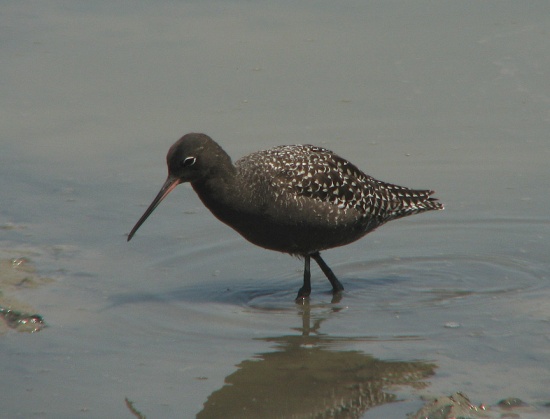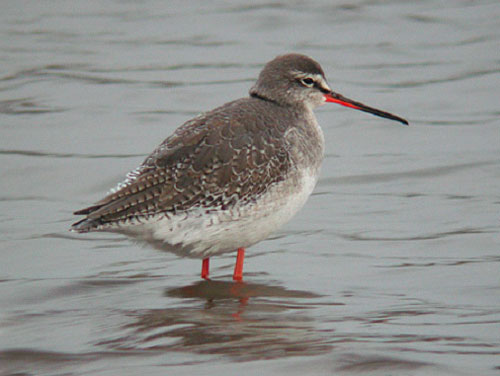
Tringa erythropus
SUBFAMILY
Tringinae
TAXONOMY
Scolopax erythropus Pallas, 1764, the Netherlands. Monotypic.
OTHER COMMON NAMES
English: Dusky redshank; French: Chevalier arlequin; German:
Dunkler wasserlдufer; Spanish: Archibebe Oscuro.
PHYSICAL CHARACTERISTICS
11.4–12.6 in (29–32 cm); 0.21–0.51 lb (97–230 g). Black both
above and below, with white dots on upperparts. In flight, a
white wedge on the back and white underwings are visible. Female
is slightly larger and paler overall.
DISTRIBUTION
Scandinavia and northwest Russia across northern Siberia to
Chukotskiy Peninsula. Winters from Europe to equatorial
Africa, east through Persian Gulf to Southeast Asia and
Taiwan.
HABITAT
Breeds in lightly wooded tundra and heathland; nonbreeders
prefer lakeshores, lagoons, and muddy coasts.
BEHAVIOR
Nonbreeders form flocks, often feeding in dense packs in deep
water.
FEEDING ECOLOGY AND DIET
Eats insects, small crustaceans, mollusks, worms, fish, and amphibians.
Pecks at prey, sweeps water with bill; sometimes
feeds while swimming.
REPRODUCTIVE BIOLOGY
Monogamous; sometimes polyandrous. Lays eggs May–June;
nests in tussocks or moss. Clutch contains three to five eggs.
Female usually leaves before eggs hatch.
CONSERVATION STATUS
Wintering numbers in Europe stable in 1970s. Population in
Europe and West Africa 75,000–150,000 (1994); 45,000–75,000
winter East Africa and Asia.
SIGNIFICANCE TO HUMANS
None known.
Photo Gallery of - Spotted redshank




 Animalia Life
Animalia Life